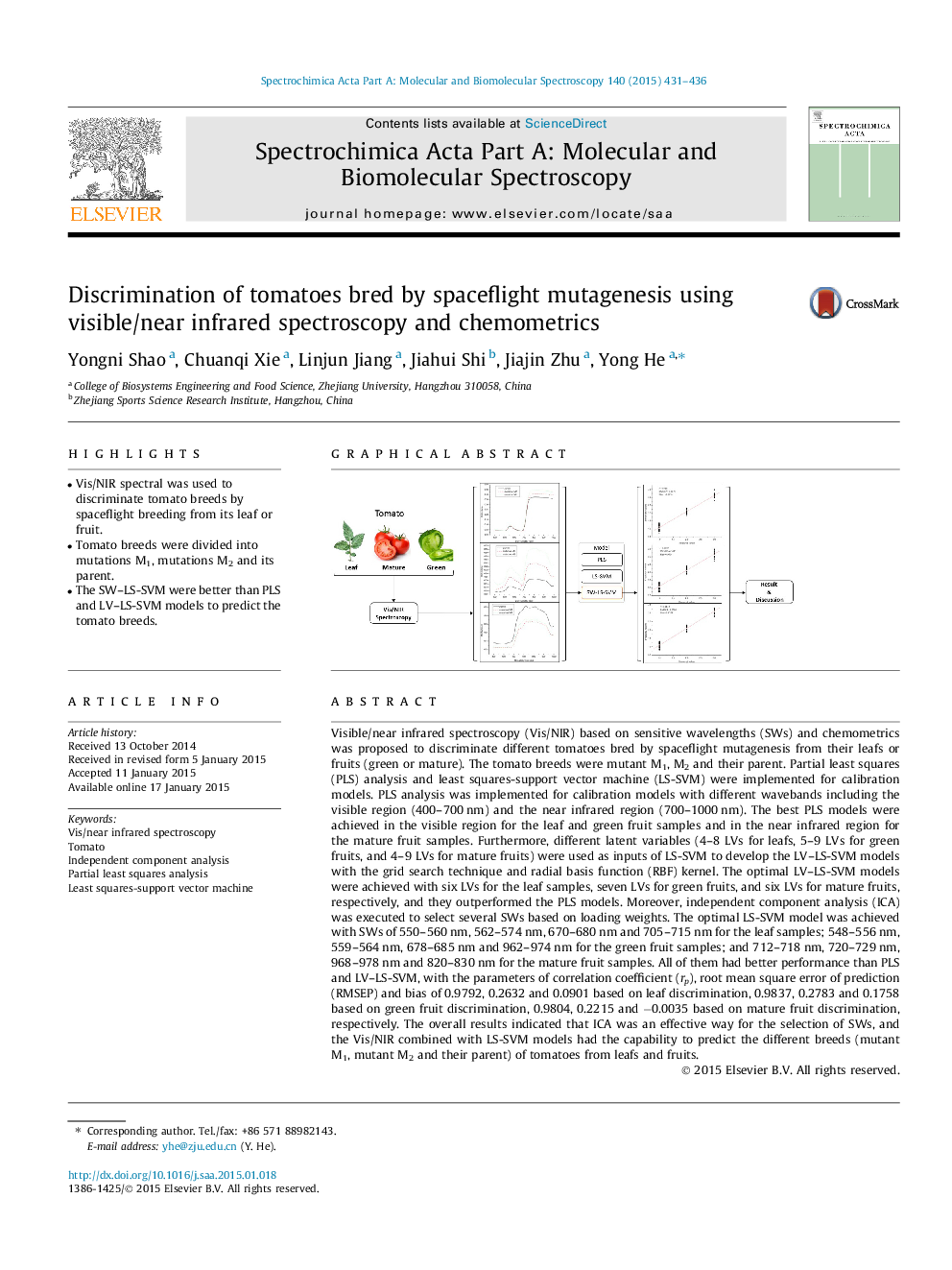| کد مقاله | کد نشریه | سال انتشار | مقاله انگلیسی | نسخه تمام متن |
|---|---|---|---|---|
| 1229398 | 1495229 | 2015 | 6 صفحه PDF | دانلود رایگان |
• Vis/NIR spectral was used to discriminate tomato breeds by spaceflight breeding from its leaf or fruit.
• Tomato breeds were divided into mutations M1, mutations M2 and its parent.
• The SW–LS-SVM were better than PLS and LV–LS-SVM models to predict the tomato breeds.
Visible/near infrared spectroscopy (Vis/NIR) based on sensitive wavelengths (SWs) and chemometrics was proposed to discriminate different tomatoes bred by spaceflight mutagenesis from their leafs or fruits (green or mature). The tomato breeds were mutant M1, M2 and their parent. Partial least squares (PLS) analysis and least squares-support vector machine (LS-SVM) were implemented for calibration models. PLS analysis was implemented for calibration models with different wavebands including the visible region (400–700 nm) and the near infrared region (700–1000 nm). The best PLS models were achieved in the visible region for the leaf and green fruit samples and in the near infrared region for the mature fruit samples. Furthermore, different latent variables (4–8 LVs for leafs, 5–9 LVs for green fruits, and 4–9 LVs for mature fruits) were used as inputs of LS-SVM to develop the LV–LS-SVM models with the grid search technique and radial basis function (RBF) kernel. The optimal LV–LS-SVM models were achieved with six LVs for the leaf samples, seven LVs for green fruits, and six LVs for mature fruits, respectively, and they outperformed the PLS models. Moreover, independent component analysis (ICA) was executed to select several SWs based on loading weights. The optimal LS-SVM model was achieved with SWs of 550–560 nm, 562–574 nm, 670–680 nm and 705–715 nm for the leaf samples; 548–556 nm, 559–564 nm, 678–685 nm and 962–974 nm for the green fruit samples; and 712–718 nm, 720–729 nm, 968–978 nm and 820–830 nm for the mature fruit samples. All of them had better performance than PLS and LV–LS-SVM, with the parameters of correlation coefficient (rp), root mean square error of prediction (RMSEP) and bias of 0.9792, 0.2632 and 0.0901 based on leaf discrimination, 0.9837, 0.2783 and 0.1758 based on green fruit discrimination, 0.9804, 0.2215 and −0.0035 based on mature fruit discrimination, respectively. The overall results indicated that ICA was an effective way for the selection of SWs, and the Vis/NIR combined with LS-SVM models had the capability to predict the different breeds (mutant M1, mutant M2 and their parent) of tomatoes from leafs and fruits.
Figure optionsDownload as PowerPoint slide
Journal: Spectrochimica Acta Part A: Molecular and Biomolecular Spectroscopy - Volume 140, 5 April 2015, Pages 431–436
